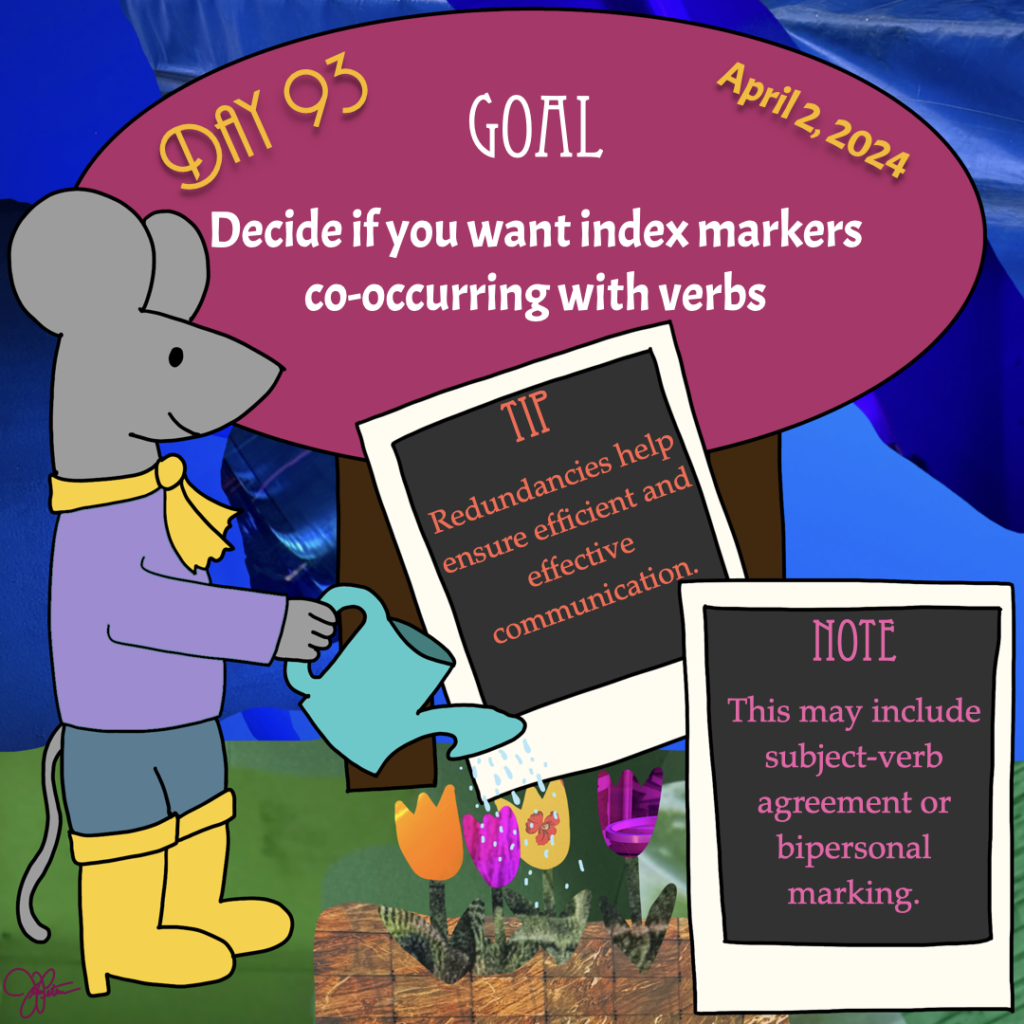
Goal: Decide if you want index markers co-occurring with verbs
Note: This may include subject-verb agreement or bipersonal marking.
Tip: Redundancies help ensure efficient and effective communication.
Work focus: Learn/Brainstorm/Try
Verbs can occur with index markers that reflect some aspect of one (or more) of their arguments. Examples of these markers include subject-agreement inflections (i.e. the inflection on the verb points to grammatical features of the subject) and bipersonal inflections (i.e. the inflections on the verb reflects grammatical features of the both the subject and object). The types of grammatical features that may be reflected in these index markers are person (e.g. first, second, third), number (e.g. singular, plural), and/or class (however class may function in your language).
If you choose to incorporate index markers, consider what grammatical features are carried on your nouns. For instance, if your language lacks number and/or class distinctions on nouns, then it would be unlikely for those features to show up in verb inflections.
It may feel redundant to mark the same grammatical information on both nouns and verbs within a clause structure. However, that kind of redundancy helps ensure more efficient and effective communication. It means that even if you don’t hear every single portion of an utterance, you may be able to piece the information you did hear together to figure out what was intended. Or, as a speaker, if you didn’t form your utterance in the clearest way possible (which happens to the best of us), these kinds of redundancies allow our hearers to still understand what we meant.
You don’t need to create the index markers today—there will be another day for that later this week!
